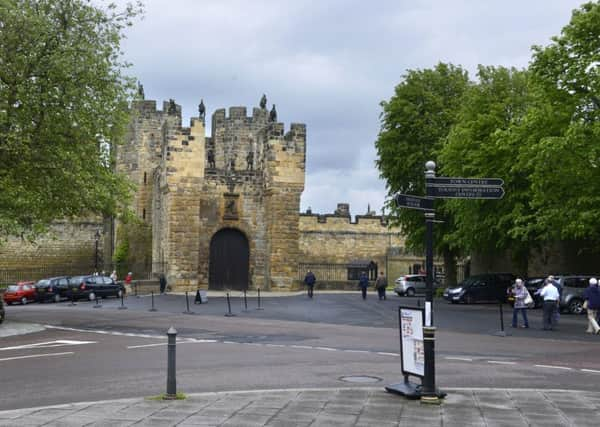Alnwick, History Society


The January talk for the Alnwick and District Local History Society celebrated the 150th anniversary of the publication of the first volume of George Tate’s History of Alnwick.
In his talk, Peter Carter described Tate’s wide interests and humanity.
Advertisement
Hide AdAdvertisement
Hide AdTate was born in 1805, and lived all his life in Alnwick. After his seven-year apprenticeship, he started a draper’s business in Paikes Street, which expanded to Fenkle Street, occupying the site where Foresters is now. In 1841, he became Alnwick’s postmaster.
George married Ann Horsley, daughter of an Alnwick freeman, and they had two sons and three daughters. According to Robert Middlemass, who knew Tate, Ann was an excellent wife. It is evident that she looked after the family and Tate’s drapers business, leaving George time for his “antiquarian and scientific research”. Sadly she died in 1847, and Tate’s research ceased for a year.
At 23, Tate became joint secretary of the newly-founded Mechanics Institute, and during his time a new building for the Institute was completed in Percy Street. Tate gave lectures here, mainly on geology and botany.
He contributed a geological commentary to John Collingwood Bruce’s classic Handbook to the Roman Wall, and joined the Berwickshire Naturalist’s Club in 1858, contributing 47 articles. He wrote on archaeology, as well as geology and biology.
Advertisement
Hide AdAdvertisement
Hide AdTate was an enthusiastic archaeologist, excavating Greaves Ash, near Linhope.
As a Liberal, he was keen that Alnwick should be improved. After the cholera outbreak of 1849, Parliament established a Local Board of Health for Alnwick and Canongate, with responsibility for street maintenance, gas supply, police and the regulation of new building. In the first elections to the board, 83 candidates stood for 18 places and George Tate was one of those elected. He took an active part in its work.
In 1866 George Tate published the first volume of his History of the Borough, Castle, and Barony of Alnwick. He had been collecting material for many years.
Tate’s history is long, with 952 pages. He took great pains in his research, and spent time in London.
Advertisement
Hide AdAdvertisement
Hide AdHe became clerk to the Common Council of the Freemen of Alnwick so that he could gain access to their records. He tackled the history of the town from its early origins, through to his own time.
Tate often quotes large chunks from his sources. This makes it rather dry, but his own remarks enliven the text. He often complains about the abuse of public funds in “jollifications”, and strongly criticises the Earl (later the 1st Duke) and the Freemen of the Borough for the abuse of their power.
Tate suffered from ill-health all his life as a chronic asthmatic. He was often house-bound towards the end of his life, and occupied the single room of his museum. He died in July, 1871.
There was a large funeral cortege, comprising members of the Local Board of Health and the Mechanics Institute, and a large contingent of the local population. There were a number of generous obituaries.
Advertisement
Hide AdAdvertisement
Hide AdThe Geological Magazine described him as: “A man without ambition, happy in public esteem, and imbued with a love for his own native district, having no claim upon it for rank, wealth, or power; he was content to live in it all his life, and to devote himself to the illustration of its history.”
The next meeting of the society will be held on February 23, at 7.30pm, at Bailiffgate Museum, when Barry Mead will be talking on Cresswell’s Curiosities.
The doors will open at 7pm.